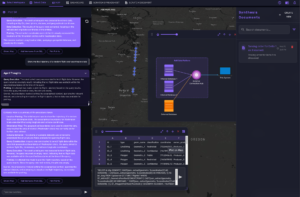
Raft today launched a generative artificial intelligence (AI) platform specifically designed to automate a wide range of processes within government organizations such as the U.S. Department of Defense (DoD).
Unveiled at an AFA Warfare Symposium, the AI Mission System (AIMS) has been trained using a narrow set of data that has been exposed to large language models (LLMs) to create AI agents capable of accelerating processing of contracts by up to 40%.
Additionally, AIMS can leverage integrations with U.S. DoD systems to make it possible to create and analyze intelligence reports up to 30 times faster, the company claims.
Those AI agents are created using an Automated AI Engineer built into the platform that enables agencies to create lightweight machine learning (ML) models in less than a day, says Raft CEO Shubhi Mishra. The company also provides ability to fine-tune AI models along with a set of pre-configured libraries and tools to create, test and iterate AI applications.
Government agencies typically generate massive amounts of data that over time make employees inefficient, says Mishra. The AIMS platform leverages AI to automate workflows in a way that reduces toil by, for example, surfacing summarizations of documents, she adds.
Like other generative AI platforms, the outputs provided are probabilistic; so they still need to be reviewed by humans, Mishra says. However, the platform does include a set of guardrails dubbed “autoraters” to ensure trustworthy AI.
As a result, the amount of mind-numbing work that would otherwise have to be manually completed using legacy systems is sharply reduced, she adds. For example, an Interactive Writer tool provides access to customizable templates that can be created to process specific tasks, complete with follow-up instructions.
Ultimately, the AIMS platform will reliably accelerate the pace at which everything from procuring systems to processing intelligence is currently conducted.
According to Mishra, that capability will also make it feasible to analyze larger amounts of data in a way that surfaces more actionable insights. “Officials will be able to make better decisions,” she says.

Raft has already developed AI agents using its Raft Data Platform that are used across more than 25 federal agencies. AIMs takes that effort to the next level by providing access to a platform that enables agencies to build and train their own AI agents.
It’s not clear to what degree government agencies are building their own AI applications but the Raft AIMS platform promises to accelerate the process by making it simpler to create LLMs that are optimized for specific tasks versus trying to train a model that has been distilled from a general-purpose LLM.
Regardless of approach, the Trump administration has made it clear that reducing costs is a major priority. While there may be disputes over how best to achieve that goal, all sides of the political spectrum are supportive of technology investments that will make government processes more efficient.
That challenge, as always, in any large organization is marshaling the resources required to focus on the best way to achieve that goal when there are often so many competing priorities.


